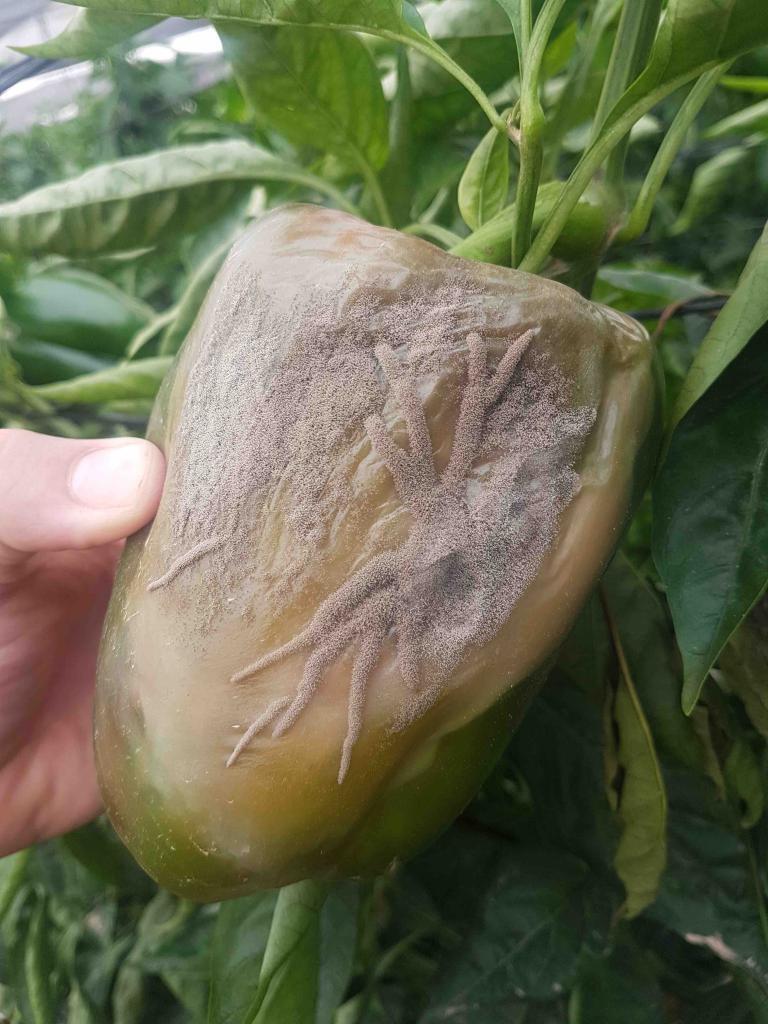Botrytis Cinerea Alert
Dense gray-brown fuzzy mycelium forms and causes infected tissue to dry.
Botrytis cinerea, also known as gray mold, is a common fungal disease. It develops primarily during wintertime and mainly appears on crops growing inside covered structures. It favors high moisture conditions and has a tendency to attack injured plant tissues. Botrytis cinerea can also occur post-harvest.
Monitoring: Make it a routine to monitor the field regularly and search plants for the presence of botrytis cinerea on a weekly basis.
Moisture reduction: Improve air circulation, promote drying foliage, and shorten the duration of wetting periods by introducing net curtain vented areas
Proper soil drainage: The presence of standing water will promote the spread of botrytis cinerea.
Sanitation: Remove plant debris and make an effort to keep your field and its surroundings as clean as possible.
When conditions for botrytis cinerea are expected, consider spraying once every 10-14 days with fungicides. Don’t use products containing the same active ingredients in consecutive treatments. Use fungicides belonging to different groups to prevent pathogens from developing resistance to a specific chemical.
The following is a list of generic names for fungicides known to help manage botrytis cinerea and is sorted into groups according to their mode of action:
Group 1: Pyrimethanil; Group 2: Cyprodinil; Group 3: Fenhexamid; Group 4: Iprodione, vinclozolin, fludioxonil, procymidone; Group 5: Azoxystrobin, pyraclostrobin, kresoxim methyl; Group 6: Chlorothalonil; Group 7: Dichlofluanid; Group 8: Mancozeb
Products based on tea tree oil and Potassium Hydrogen Carbonate+copper sulfate
Bacillus subtilis
*Names marked in red are considered to be highly poisonous to beneficial insects.
*Names marked in green are considered to be organic and IPM (integrated pest management) compatible.
Image Gallery


